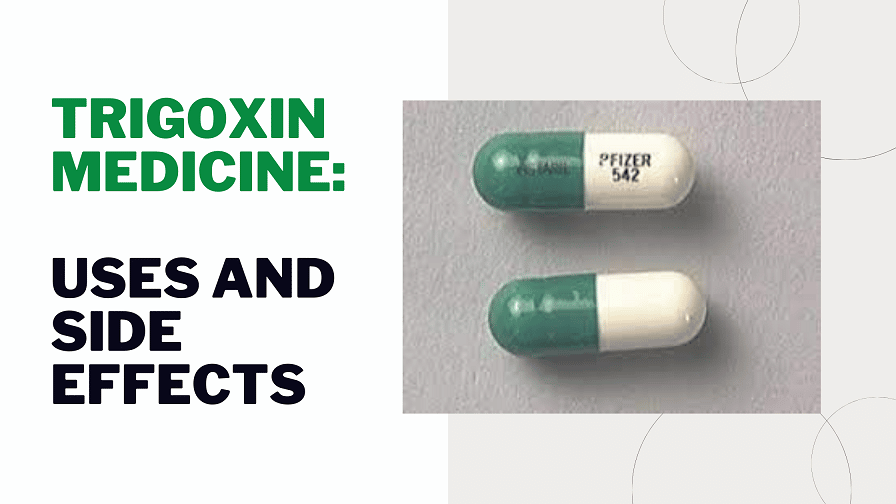Trigoxin Imagine a tiny pill that can regulate your heartbeat, strengthen your heart’s contractions, and improve the overall efficiency of this vital organ. Sounds like something out of a science fiction movie. Well, it’s not! This wonder drug is known as Trigoxin, and today, we’ll delve into the fascinating science behind how it works in the body. So grab a seat and prepare to be amazed as we explore the extraordinary effects of on our cardiovascular system. Get ready for an eye-opening journey into medical marvels!
What is Trigoxin?
Trigoxin, also known as digoxin, is a medication that falls under the category of cardiac glycosides. Derived from the leaves of the foxglove plant (Digitalis purpurea),has been used for centuries to treat various heart conditions. Its potent properties make it invaluable in managing atrial fibrillation, congestive heart failure, and certain arrhythmias.
But what sets Trigoxin apart from other medications? Well, its mechanism of action is truly remarkable. When ingested orally or administered intravenously, enters the bloodstream and travels to the heart muscle cells, where it binds to specific receptors called sodium-potassium ATPase pumps.
Once bound, inhibits these pumps’ activity, increasing intracellular calcium levels within the cardiac muscle cells. This surge in calcium triggers a more muscular contraction of the heart muscles during each heartbeat. As a result, blood is pumped more efficiently throughout the body, and oxygen delivery improves significantly.
However, it’s important to note that while can work wonders for those with cardiovascular issues when used correctly, it must be prescribed by a healthcare professional who carefully considers factors such as age, weight, kidney function, and any existing medical conditions before determining an appropriate dosage.
So next time you hear about this extraordinary medication called T or dig into its fascinating history rooted in natural remedies dating back centuries, remember how far we’ve come thanks to scientific advancements!
How Trigoxin Affects the Body
Trigoxin, or digoxin, is a medication that belongs to a class of drugs called cardiac glycosides. It has been used for decades in treating heart conditions such as congestive heart failure and certain types of irregular heartbeat.
Trigoxin works by inhibiting an enzyme called Na+/K+ ATPase when taken orally or intravenously. This enzyme plays a crucial role in maintaining the balance of sodium and potassium ions inside and outside the cells. By inhibiting this enzyme, increases the concentration of intracellular calcium ions in cardiac muscle cells.
The increase in intracellular calcium levels leads to enhanced heart muscle contractility. This means that each heartbeat becomes more robust and more efficient at pumping blood. Additionally, can slow down electrical conduction through specific pathways in the heart, helping to regulate irregular rhythms.
It’s important to note that has a narrow therapeutic window, meaning that its dosage must be carefully monitored to avoid toxicity. Too much can cause serious side effects such as nausea, vomiting, blurred vision, and even life-threatening arrhythmias.
Understanding how Trigoxin affects the body helps us appreciate its role in managing various cardiovascular conditions. However, working closely with healthcare professionals when taking this medication is essential due to its potential risks and interactions with other drugs or medical conditions.
Side Effects of Trigoxin
Side Effects of Trigoxin
While Trigoxin can be an effective medication for certain conditions, it is essential to be aware of the potential side effects that may occur. Individuals may react differently to any medication and experience varying side effects.
One common side effect of Trigoxin is nausea or vomiting. This can be mild in some cases but may become more severe in others. If you experience persistent vomiting while taking Trigoxin, it is essential to contact your healthcare provider.
Another possible side effect is dizziness or lightheadedness. This can occur due to changes in blood pressure caused by the medication. It is advisable to avoid activities that require alertness until you know how Trigoxin affects your body.
Individuals may sometimes develop a rash or other skin reactions due to taking Trigoxin. If you notice any unusual skin symptoms, such as itching or redness, it is recommended to seek medical attention promptly.
It’s worth noting that not everyone will experience these side effects, and many people tolerate Trigoxin well without any issues. However, if you do encounter any concerning symptoms or have questions about potential interactions with other medications you are taking, consult your healthcare professional immediately.
Remember, this information does not replace medical advice from a qualified healthcare provider.
How to Take Trigoxin Safely
Taking Trigoxin safely is essential for effectively managing your condition. Here are some important guidelines to keep in mind when using this medication:
1. Follow your doctor’s instructions: Your healthcare provider will prescribe the appropriate dosage of Trigoxin based on your specific needs. It is crucial to follow their instructions carefully and only adjust the dose after consulting them first.
2. Take it regularly: To ensure consistent levels of Trigoxin in your body, taking the medication simultaneously each day is essential. This will help maintain its effectiveness and minimize any potential side effects.
3. Avoid missing doses: If you accidentally miss a dose, take it as soon as you remember unless it’s almost time for the next scheduled dose. In such cases, refrain from doubling quantities or making up for the missed one.
4. Be aware of interactions: Trigoxin may interact with certain medications, including over-the-counter and herbal supplements. Inform your doctor about all other medications you are taking so they can determine if any adjustments need to be made.
5. Monitor your symptoms: Pay attention to how you feel while taking Trigoxin and promptly report any changes or concerns to your healthcare provider.
Remember that these guidelines provide general information but should not replace medical advice tailored specifically for you by a healthcare professional.
Dosage of Trigoxin
Dosage of Trigoxin
When taking any medication, including Trigoxin, following the prescribed dosage instructions is essential. The dosage of Trigoxin will vary depending on factors such as age, weight, and medical condition. It’s crucial to consult with your healthcare provider to determine the proper dosage for you.
The initial recommended dose for adults is 0.125-0.25 mg, taken orally once daily. However, this can be adjusted based on your needs and medication response. Your doctor may increase or decrease the dose until they find the optimal amount that effectively manages your condition.
For elderly patients or those with kidney problems, a lower starting dose may be necessary due to potential changes in drug metabolism and clearance rates in these populations.
It’s essential not to take more than the prescribed amount or change your dose without consulting your doctor first. Taking too much Trigoxin can lead to serious side effects or toxicity.
Everyone’s body is different, so what works for one person may not work for another. Keep track of how you feel while taking Trigoxin and promptly report any concerns or unusual symptoms to your healthcare provider.
In addition to following proper dosing guidelines, taking Trigoxin consistently at around the same time each day is essential. This helps maintain stable medication levels in your system and ensures its effectiveness.
Always use caution when administering medications yourself, and never share prescription drugs with others since their conditions might differ from yours significantly.
If you accidentally miss a dose of Trigoxin, don’t double up on doses; continue with your regular schedule as soon as possible unless otherwise instructed by your doctor.
Taking medication correctly is crucial for achieving optimal health outcomes while minimizing risks associated with improper use. Always seek guidance from qualified healthcare professionals regarding treatment options and dosages tailored to your needs.
Conclusion
Conclusion
Trigoxin is a medication that has proven effective in treating certain heart conditions. It works by inhibiting the sodium-potassium pump, which helps regulate the balance of ions within cells. This action ultimately leads to a decrease in heart rate and an increase in the strength of each heartbeat.
While Trigoxin can benefit those with specific cardiac issues, it’s important to note that it may not be suitable for everyone. Like any medication, Trigoxin has potential side effects such as nausea, vomiting, and dizziness. It is crucial to take this medication exactly as prescribed and monitor your symptoms closely.
When taking Trigoxin, always follow your healthcare provider’s instructions carefully. They will determine the appropriate dosage based on various factors such as your age, weight, and overall health condition. Never adjust or stop taking this medication without consulting with your doctor first.
Trigoxin is a valuable tool in managing certain heart conditions by regulating heart rate and improving cardiac function. However, it should only be used under medical supervision due to its potential side effects and interactions with other medications.
If you have any concerns or questions about using Trigoxin or experience any adverse reactions, contact your healthcare provider immediately. They will provide guidance tailored to your needs and ensure optimal care throughout your treatment journey.





